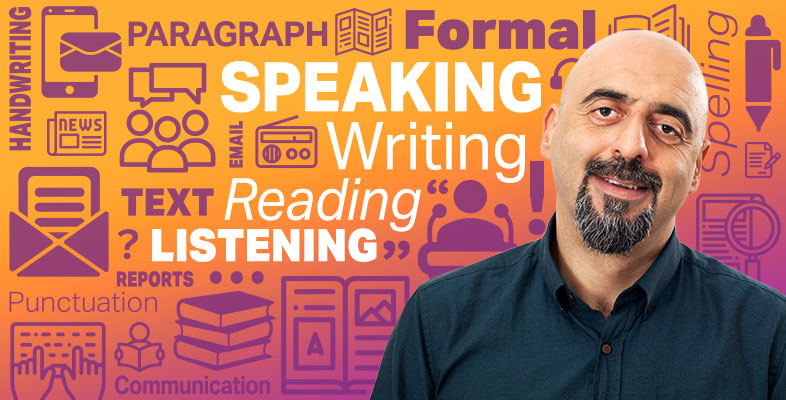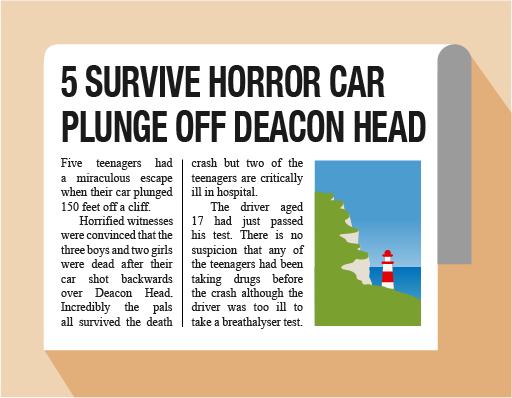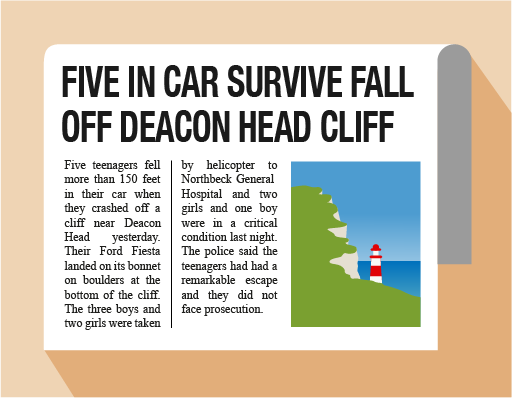3.2 Fact and opinion
It is very important, as an active reader, to recognise the difference between fact and opinion in texts. Facts are true and cannot be argued with, because they can be proven and are supported by evidence, while opinions vary according to the attitudes of the writer. Remember, however, that facts can be twisted to fit the opinions of the writer.
Activity 15 What is fact and what is opinion?
Without using a dictionary or a search engine, write down what you think is meant by ‘fact’ and ‘opinion’.
Discussion
Here’s what I wrote. Yours might not be exactly the same but should be similar.
- Fact: Something that is true and can be proved.
- Opinion: A person’s view. It may or may not be backed up by facts.
When people write articles, they often select facts that support their opinion.
When you read this kind of text, you need to be able to tell the difference between facts that can be backed up by evidence and ‘facts’ that have been made up by the writer. You can do this by:
- checking that any reports that are quoted actually exist and refer to the fact in question
- finding other sources that give opposing points of view
- thinking of the reason the text has been written and its audience (for example, an article in a popular newspaper may have been written to sell the newspaper rather than to give a true or fair account of an incident)
- looking for sensationalist words, such as ‘horror’ or ‘disgraceful’, which might influence readers’ opinions.
An objective piece of writing is based on facts and can be backed up with evidence. Subjective writing expresses opinions and feelings rather than facts.
Activity 16 Recognising fact and opinion (1)
a.
Article 1
b.
Article 2
The correct answer is b.
a.
Article 1
b.
Article 2
The correct answer is b.
a.
Article 1
b.
Article 2
The correct answer is a.
Discussion
Article 1 is more sensationalist than Article 2 and probably appeared in a popular newspaper. The clues that Article 1 is based on opinion rather than on facts alone include the following:
It uses emotional language such as ‘horror’, ‘miraculous’ and ‘incredibly’.
It mentions drugs and alcohol although there was no direct evidence of either – if the driver had not been a teenager, would they have mentioned drugs or alcohol at all?
It contains bias and prejudice, for example through the repeated use of the word teenager and the mention of drugs, which may not have been included if the people involved had been older.
It is interesting how the use of words changed what was a terrible accident into an opinion on teenage drivers, drugs and alcohol.
Article 2 is fairer and simply gives the facts of the crash. It does not try to place the blame on anyone or sensationalise the event.
Now try the next activity, which gives you more practice in recognising the difference between facts and opinions.
Activity 17 Recognising fact and opinion (2)
The following extract is adapted from an article in a national newspaper. Highlight facts in yellow and opinions in green.
Discussion
These are facts, as you may have seen them on first reading:
- lighting up just one cigarette knocks 11 minutes off a life span
- over a lifetime the average male smoker consumes 311,003 cigarettes
- smoking a packet of 200 cigarettes knocks a day and a half off your life.
The only opinion is offered by Clive Bates, when he described smoking as ‘a disgusting habit’.
Reading all the statistics about smoking affecting length of life, I took the article to be a fair description of the impact of smoking on health. On second reading, however, it seems that the figures themselves cannot be trusted. According to the doctor, they are ‘crude’ – which could mean inaccurate.
This is a good example of where you can be misled by what appears to be the truth. On first reading it may appear that you are reading facts in the form of statistics, but these statistics may have been picked to reflect someone’s opinion.
Activity 18 Same story, different reports
Read the two texts below.
What similarities and differences can you spot?
Which contains the most bias?
Text A
As part of a healthy, balanced diet, you should consume fewer foods and drinks that are high in sugars. Sugary foods and drinks can cause tooth decay, especially if you have them between meals.
Many foods that contain added sugars also contain lots of calories but often have few other nutrients. Eating these foods frequently can contribute to becoming overweight.
Being overweight can increase your risk of health conditions such as:
- heart disease
- type 2 diabetes
- stroke.
Text B
As I bite into a fresh apple, I stop to think about what I am eating. I am consuming a fruit, which means I am absorbing fructose. And what is fructose? A SUGAR (cue scary music)!
In a world where the consumption of sugar is being slammed (for good reason), it concerns me that all sugar is being treated equally, and it shouldn’t be.
While some sugary foods should be avoided like the plague, others, if consumed appropriately, can be your friend.
Discussion
The texts are similar in that they are on the same topic and they can both be found online. However, they express different opinions on the subject and do so using different styles of writing.
- Text A uses more factual language, whereas Text B uses sensationalist language with words such as slammed, concerns and plague.
- Text A uses facts to support the argument, whereas Text B uses opinion.
- Text A uses formal language and has a professional tone, whereas Text B is much more informal and speaks directly to the reader.
Text B contains the most bias as it argues and highlights the writer’s opinion using the techniques identified above. Text A contains less bias and uses facts to support the writer’s case.
Remember, journalists write for the people who buy their newspaper, so stories are slanted towards keeping them interested.
In this section you have looked at:
- identifying fact, opinion, bias and prejudice
- how a writer’s point of view can affect the way they write a text
- telling the difference between what is true and what is opinion.
Being able to do these things makes you a critical reader – a crucial step in becoming a good reader.


